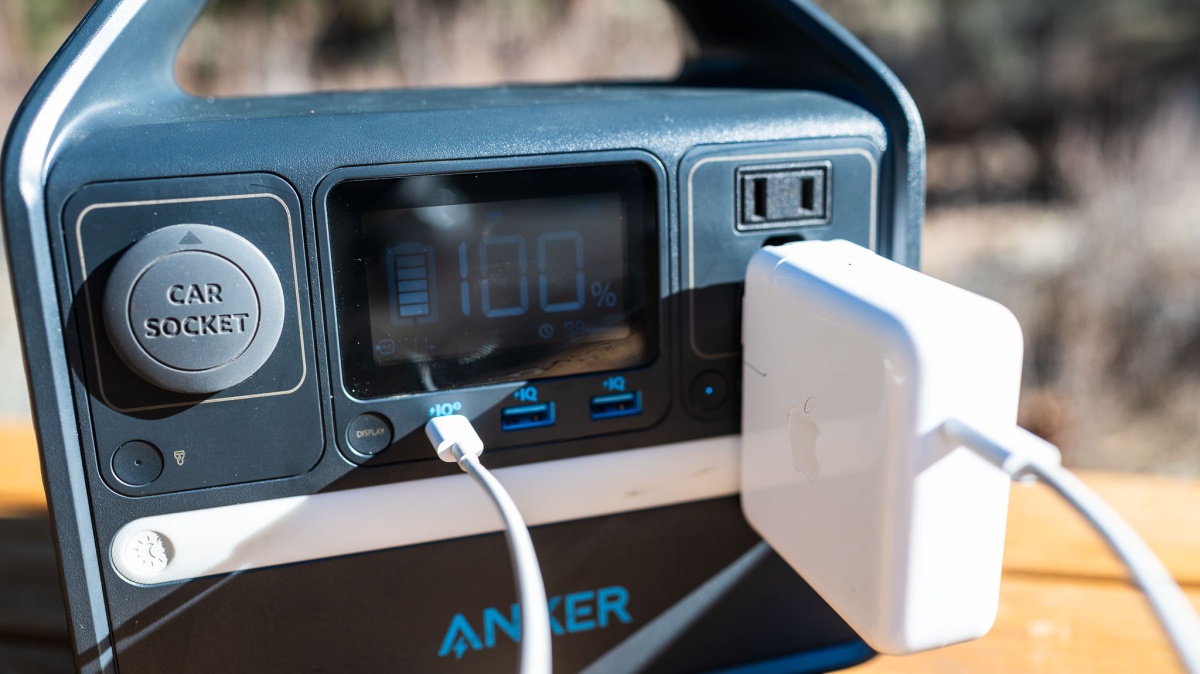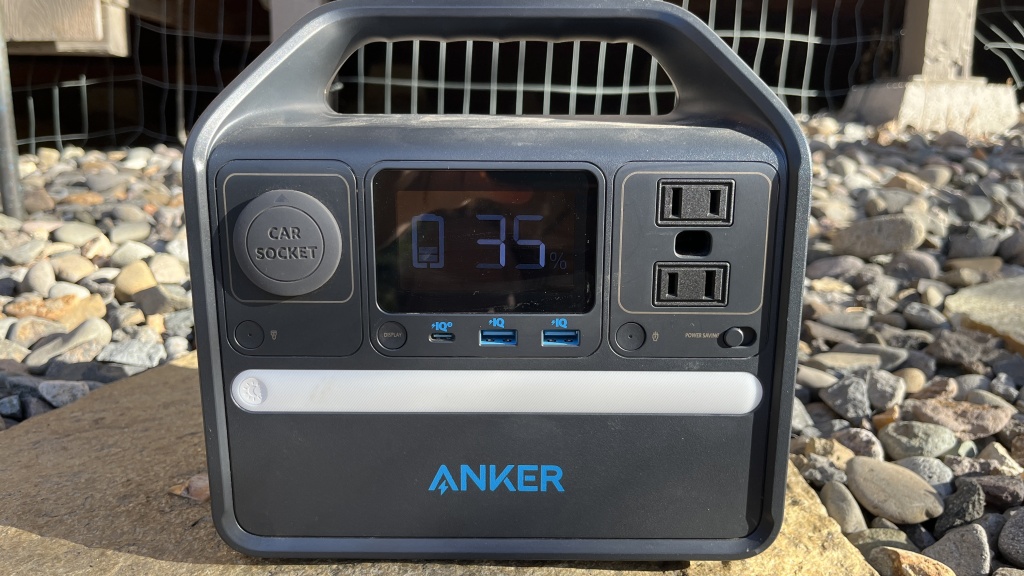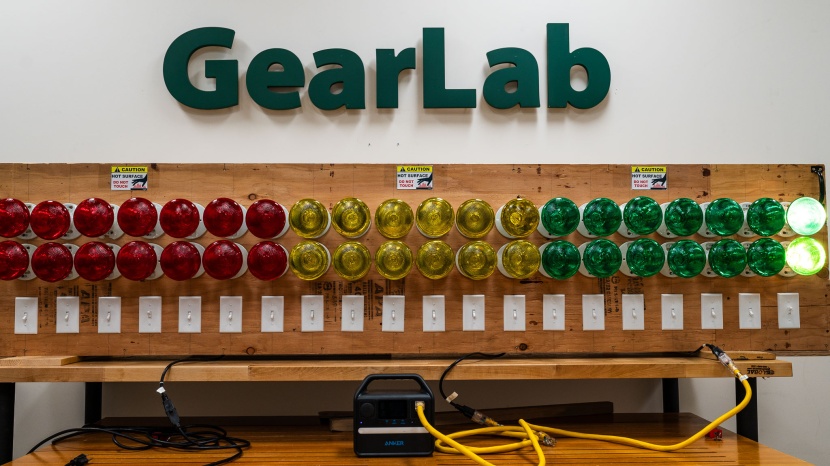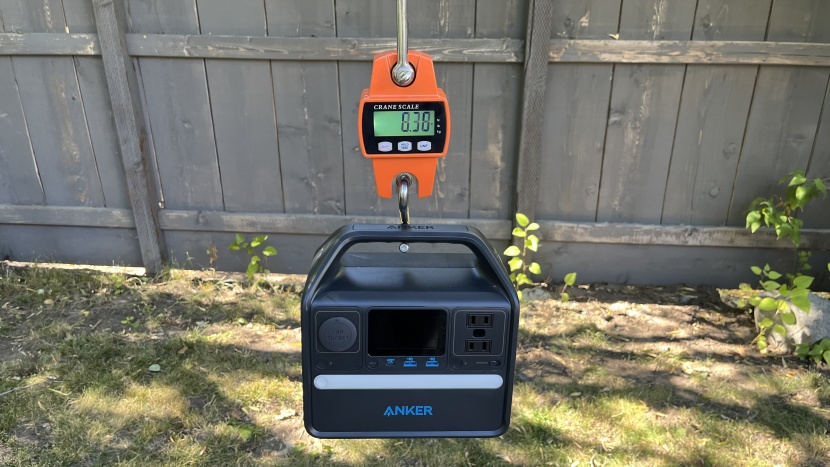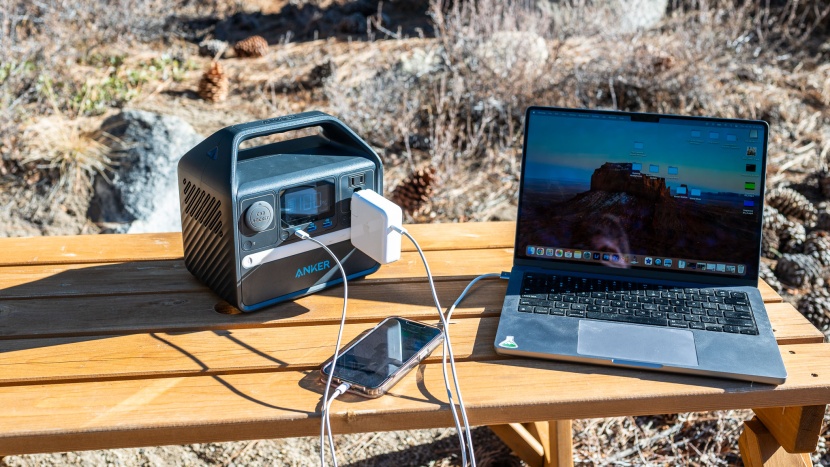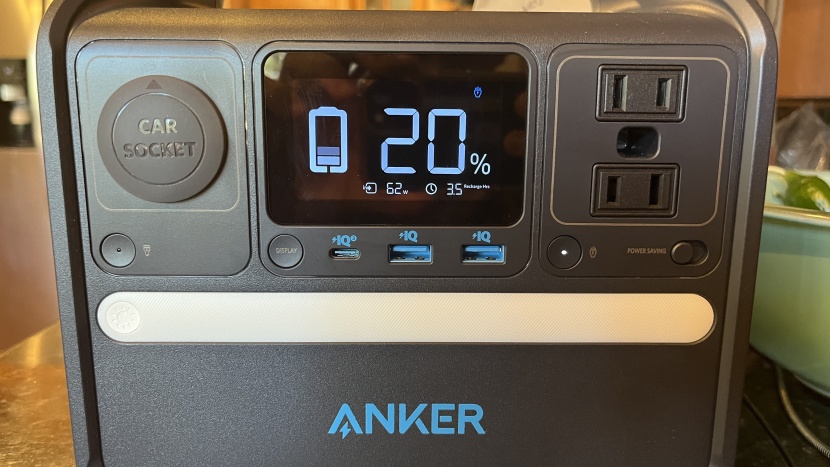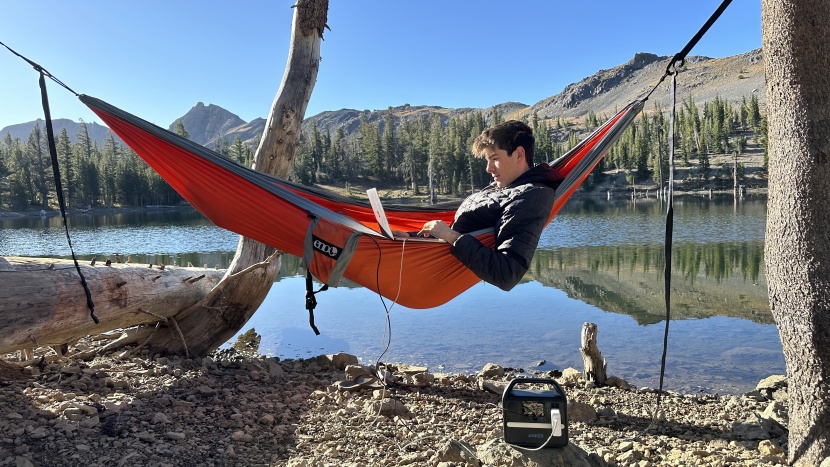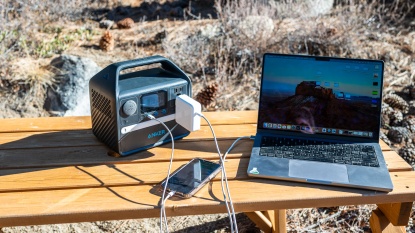
Our Verdict
Our Analysis and Test Results
Anker's smallest power station offering, the 521, is designed to supplement your devices and electronics while away from a power source. Its durable design, LED display, and built-in light make this model a surprisingly good value.
Power Output
This unit delivered 192 watt hours of AC output compared to the 256 advertised watt hours.
It includes multiple USB-A ports but only one USB-C port. With the prevalence of USB-C, it would have been better to see another port there. The 521 is equipped with two AC ports, which is a good tradeoff for only having one USB-C.
Portability
To test mobility, we weigh and measure the dimensions of each power station against the manufacturer's stated specifications. We then spend plenty of time tossing each power station into cars, campers, and garages, noting how they feel to move and lift. Our mobility metric combines the quantifiable data of each power station and the more objective data from our testers, which takes into account the overall feel and portability.
Thanks to its ultra-portable size, the Anker 521 was one of our most portable power stations tested. Aside from its weight of just 8.4 lbs, the design of the 521 is sleek, with a built-in handle and unibody outer. Its small form makes it one of our first choices when heading out and wanting to stash it in your bag or backpack for the day.
Charge Speed
With a charge time of 248 minutes, the 521 was one of our slowest models tested relative to its size. It charges at a very slow speed of 62 Wh/hr, which is a fraction of the pace of many larger batteries. While 4 hours for a full charge isn't unbearable, that is a considerable amount of time for a unit that only possesses 192 usable watt-hours.
Outside of its AC charging cord, it can also be charged through solar with input up to 65 watts and has an included DC car port charger.
Features
Where the 521 separates itself from other similarly priced options is in its display. A bright, informative LED display tells you everything you need to know about charge time and input/output. It also has custom charge settings, which are nice even for smaller power stations. Additionally, the Anker app is one of the more dialed apps we've used and can be connected to the 521 to control power functions and monitor battery status remotely.
Should You Buy the Anker 521?
If you're on a tighter budget and looking to try out a portable power station, the Anker 521 is a solid option. It will reliably keep electronics charged and run small appliances smoothly. Despite its limited power performance, Anker's reputation and 5-year warranty on the 521 is a tradeoff worth considering.
What Other Portable Power Station Should You Consider?
If you're set on a small form power station, our other favorite is the Jackery 300. It's similarly sized but has a slightly larger battery and inverter. Anker also has an excellent mid-sized power station, the Anker Solix C1000, which is one of our favorite options for camping and traveling. If power is what you're after, check out the EcoFlow Delta Pro, the ultimate power station for heavy-duty applications and tools.


